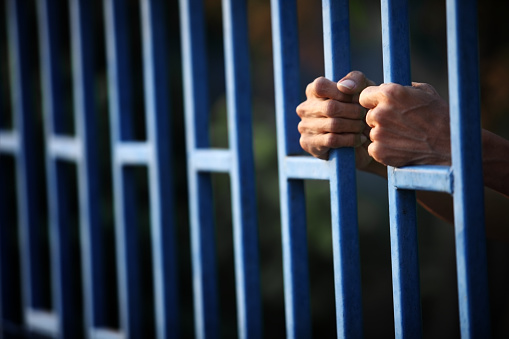Finally, Democrats and Republicans have agreed that reducing prison sentences should be a priority, especially for nonviolent drug offenses. It’s common sense that people with substance-use disorders should be offered addiction treatment as an alternative to incarceration. But what if they can’t stop using drugs? They still don’t belong in prison.
 Incarceration Undermines Recovery
Incarceration Undermines Recovery
Incarceration is destabilizing and can set people back in their addiction recovery. In low-income communities, it leads to housing instability and unemployment, and strains the relationships with families necessary for recovery. Incarceration may also disrupt addiction treatment, which is like suspending a kid from school for truancy, thereby guaranteeing that child won’t get the attention he or she needs. And without appropriate treatment, formerly incarcerated individuals die at a frighteningly high rate when released. In the two weeks following release from prison, a person’s risk of death from drug overdose is 129 times greater than that for the general population.
Addiction as a Chronic Illness
I am a primary care physician specializing in treatment of opioid-use disorder—addiction to heroin or prescription painkillers such as Percocet or OxyContin. My patients may have started using opioids for the euphoric effects, or “high,” but by the time they become addicted, they are physically dependent on opioids just to feel normal and avoid painful withdrawal. Brain imaging studies demonstrate neuroanatomical changes—changes to their brain circuitry—with addiction that lead to intense cravings for the drug and changes in motivation, memory and control. The American Society of Addiction Medicine emphasizes that addiction is not just a behavioral disorder, but that there are neurobiologic, genetic and environmental contributors to it.
Like diabetes and heart failure, addiction is a chronic disease and should be treated that way. We seek to control symptoms and avoid complications, but cures are rare. We need to focus on long-term management and support—not punish people if they struggle.
Managing Addiction: A Case Study
My patient Mr. H is a 50-year-old Latino who has spent most of his adult life in prison. He started injecting heroin at age 12 while hanging out on rooftops in the Bronx instead of going to school. When he came home from prison in 2008, I prescribed him buprenorphine-naloxone (better known under the brand name Suboxone), and he has dramatically reduced his heroin use, but he has been unable to stop completely. His goal for treatment is to stay out of prison.
To Avoid Relapse, More Than Willpower Is Needed
My colleagues and I have studied why people relapse to opioids when they come home from prison, and what can be done to help them engage in treatment. Our study participants were exposed to the worst possible conditions for recovery when coming home. They lived in three-quarter houses or shelters, sleeping in cramped rooms with five or six others, many of whom were still using drugs. They found drug paraphernalia in the bathrooms or were offered drugs daily. These conditions contributed to a sense of hopelessness, which inevitably led to relapse.
Our study participants were also reluctant to use medications such as buprenorphine or methadone for opioid-use disorder. These medications provide the most effective treatment, but they are still highly stigmatized in the United States and are not offered to state prisoners in New York. Our participants talked about needing willpower to avoid drug relapse, but they also mentioned needing jobs, stable housing and social support. As a society we focus on the willpower component of recovery, but without these other elements, including access to medications, the risk of relapse and overdose is just too high. Something needs to change.
For Mr. H, the problem is not a lack of willpower. He’s motivated, participates in counseling and is working on repairing family relationships. But he still uses heroin when stressed out. “I don’t steal from nobody. I don’t sell drugs,” he’ll say, indicating that his addiction is under much better control than in the past. Most importantly, he’s been home for seven years—his longest amount of time as an adult. When he was on parole, the courts required weekly drug tests with the threat of more prison time for a positive result. But as Mr. H attempts to establish a more stable life, the last thing he needs is more prison time.
How Stigma Thwarts Healing
What Mr. H. desperately needs—a job, stable housing and positive social support—are explicitly impeded because of his criminal record. Employment discrimination based on a criminal record is illegal, but employers have long used questions on job applications to screen out formerly incarcerated individuals. In New York City, as in other places, a criminal record can bar public housing benefits. In 12 states, voting rights can be denied permanently due to a felony conviction.
Incarcerating addicted people is counterproductive and expensive. In comparing costs, the New York Academy of Medicine reported that the annual costs per person of addiction treatment are $4,000–$10,000 for outpatient services and $18,000–$25,000 for residential treatment, while incarceration is $40,000. It is estimated that New York spends over $500 million annually incarcerating individuals for drug offenses.
Ultimately, prison cannot be the only place for people who struggle to stop using drugs. We need to accept that addiction is a chronic illness and devise better ways to support people instead of concentrating on punishment. Not everyone will have success with 12-step programs such as Narcotics Anonymous, so we also need to ensure availability of medications such as buprenorphine-naloxone and methadone. We are in the midst of an opioid-addiction epidemic, and there is not going to be one easy solution. But we know for certain that locking people up is not the answer.


Comments on this entry are closed.
You described exactly, what we see in Germany. Incarzeration og people who inject drugs is contraproductive and it is a risk factor for HIV and HCV infection